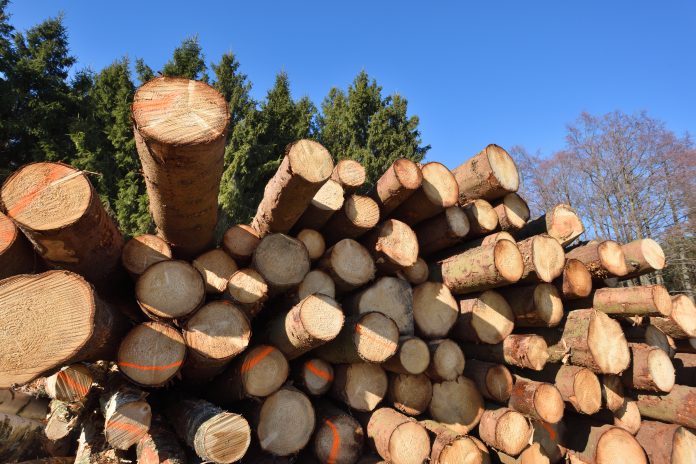TECH4EFFECT Co-ordinator and Head of Research of Forest and Forest Resources from the NIBIO, Rasmus Astrup explains how timber extraction needs to be improved for greater environmental and production efficiency in the European forest sector
The TECH4EFFECT Special Issue was published recently in the International Journal of Forest Engineering.
Future value and job creation must be shifted towards greener products and services that contribute with an improved or even positive climate and environmental footprint. The forestry sector has repeatedly been pinpointed as one of the cornerstone sectors in achieving the desired green shift.
To supply the green economy with the required amount of timber and biomass, forest management has to be sustainable both in terms of economic and environmental impacts.
In this context, forest harvesting and extraction play a key role as both tasks make up the most fuel and cost-intensive part of forest management, as well as that part where environmental impacts potentially are greatest and subject to the largest degree of public scrutiny. So, to fulfil the potential of the European forest sector in moving toward this greener future, research and development related to improving both environmental and production efficiency is of utmost importance.
The efficiency increase in the forest sector over the past 50 years has been phenomenal and largely driven by technical and work-method based developments such as the transition from hand saws and chainsaws to the current fully mechanised harvesting systems. These changes have been described as adhering to the law of discontinuous evolution where revolutionary progress is offset by periods of adoption and maturation (Samset 1992).
Today’s technologies and methods are once again considered to be reaching a high degree of maturity with diminishing potential for further efficiency gains within the current operational paradigm.
TECH4EFFECT project
The main idea behind the TECH4EFFECT project was therefore to enable novel data-driven, knowledge-based solutions as well as provide key incremental improvements in the technologies and their application. This was sought in an attempt to clear the way for the next revolutionary, or in today’s terms, disruptive, leaps in improvement in the environmental and production efficiency in the European forest sector.
This collection of papers describes some of the achievements of TECH4EFFECT. The special issue highlights technical solutions for reducing impacts on soils with low bearing capacity.
Studies show the effect of a traction-assist winch on wheel slippage and machine induced soil disturbance (Schönauer et al. 2021) and the effect of bogie track and forwarder design on rut formation on peatlands (Ala-Ilomäki 2021), both on flat terrain.
For operations on steep terrain, studies illustrate technical solutions for increased productivity and energy efficiency in cable yarding. To this end, Varch et al. (2021) compare energy consumption in slack-pulling from a conventional diesel carriage against consumption in an energy-recuperating carriage in whole tree cable yarding, while Spinelli et al. (2021a) provide insight into skyline tension and dynamic loading for cable yarding comparing conventional single-hitch versus horizontal double-hitch suspension carriages.
The potential for further improvements in conventional mechanised operations is illustrated by a study on the effect of tree marking versus tree selection by harvester operators in central Europe (Eberhard and Hasenauer 2021), as well as a sustainability assessment of mechanisation and rationalisation of coppice management in Mediterranean Europe (Spinelli et al. 2021b).
The issue ends with a focus on the use of digital tools and automatically captured data for improved insights and efficiency gains. Erber et al. (2021) illustrate decision support for chain-saw operators by evaluating a mobile device app for value-maximised bucking.
Aalmo et al. (2021) illustrate how insight into efficiency drivers of harvesting operations can be gained through Data Envelopment Analysis (DEA) of automatically captured machine data in a Norwegian case study, while Strange et al. (2021) provide a review of DEA and stochastic frontier analysis in benchmarking studies and provide an outlook for future possibilities for interactive benchmarking.
On behalf of the TECH4EFFECT project and all the many participants, I would like to extend my gratitude to the editor-in-chief, Charlie Blinn for embracing and supporting this special issue, and to our guest associate editors Johanna Routa, Bruce Talbot, Karl Stampfer and Dirk Jaeger.
The nine papers that are included in the International Journal of Forest Engineering can be viewed HERE.
Funding
TECH4EFFECT received funding from the Bio-Based Industries Joint Undertaking (BBI-JU) under the European Union’s Horizon 2020 research and innovation programme, grant agreement no. 720757.












Professional arborists are trained to provide proper care and management and to help maintain healthy trees. Their expertise may include planting, transplanting, fertilizing, pruning and tree removal.